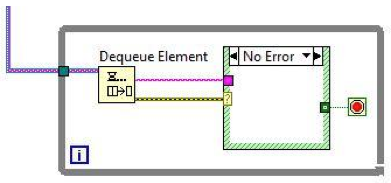What is the best method to stop a While Loop on an error condition?
- Compare the Status boolean of an error cluster with a constant and wire it to the Stop terminal.
- Connect the error wire directly to the Stop terminal.
- Create an Event structure to handle the error event.
- Use the Error Handler VI to automatically handle the error.


